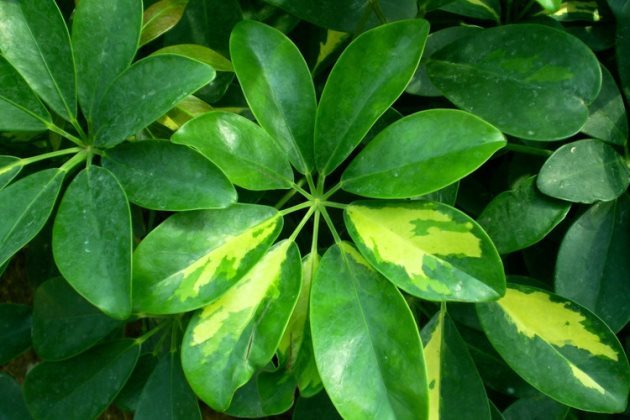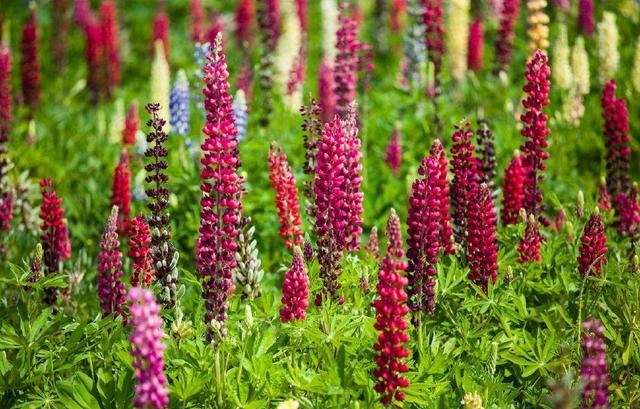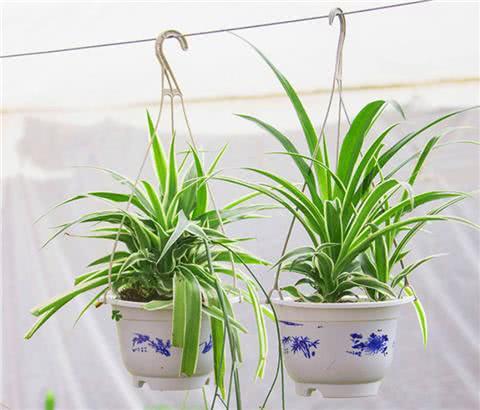Can't you raise duck feet well? It will flourish in this way.

Duck palm wood, also known as duck foot wood, goose palm wood and so on, is a very common greening plant in residential areas and parks. Duck palm wood has a very good effect on purifying the air and absorbing carbon dioxide, formaldehyde, benzene and other decoration waste gas and secondhand smoke in the air.
In recent years, with people's attention to the living environment, more and more flower friends like to keep duck palm wood in flowerpots in indoor or balcony and other places. Especially for some families with smokers, raising a duck palm tree can effectively help purify and absorb secondhand smoke and prevent secondhand smoke from causing harm to the family. However, how can duck palm wood grow better indoors from a landscaping plant to a potted green plant? Today, Hua'ergu will tell you about the breeding methods and matters needing attention of duck palm wood.
The culture method of duck palm wood
1. Soil selection
Duck palm wood is a kind of tree that likes to grow in fertile, loose, well-drained soil. Duck palm wood likes to be wet but not resistant to stagnant water, so we suggest that when raising duck palm wood, it is appropriate to choose some soil with good drainage. We can use garden soil + rotten leaf soil or pond mud + peat soil to cultivate duck palm wood, which is not easy to accumulate water and is a very good culture medium.
2. Watering skills
Although duck foot wood likes to be wet, we can't let its basin soil be too wet all the time. If the humidity is not well controlled, it will cause the leaves to soften, turn yellow and the roots will rot. On the contrary, the growth of duck foot wood is absolutely indispensable without water, long-term drought will lead to its lack of water and leaf shedding, plant drying up. Therefore, on the basis of the principle of seeing dry and wet, we can properly advance some time to keep the soil slightly moist at its best.
3. Lighting conditions
Duck palm wood likes to grow in a semi-shady environment, so it is very appropriate to raise it in indoor astigmatism, if it is too strong on the balcony, where there is direct sunlight, it will cause strong light burns or slow leaf growth. On the other hand, although duck palm wood likes shade, it will lead to overgrowth or poor growth if it is raised in a dark corner for a long time. Therefore, it is most appropriate to find a place where there is enough scattered light to cultivate it.
4. Temperature requirement
The optimum growth temperature of duck foot wood is about 15-30 ℃. The growth will stagnate when the temperature is too high, and the leaves will fall when the overwintering temperature is below 5 ℃. Therefore, we must at least keep its temperature between 5 and 35 ℃ in order to keep it alive. If we want to make it grow better, we must keep its temperature within the right temperature.
Matters needing attention in duck palm wood culture
Although duck palm wood likes the wet environment, but we also need to water in accordance with the law, the slightly moist state must be based on the dry and wet.
The environment of duck palm wood maintenance should be well ventilated, it will not be too muggy in summer and not too dry in winter.
Duck palm wood also needs pruning, if it is not pruned for a long time, some residual branches and diseased leaves will accumulate in the flowerpot, which is easy to cause bacterial growth, which is extremely disadvantageous to the growth of the plant.
The above is the breeding method of duck palm wood introduced to you by Hua'ergu. If you also like to breed duck palm wood, you also have your own good experience in raising duck palm wood. Welcome to leave a message and share with your friends in Hua'er Valley.
- Prev

Lu Binghua is also called Lupin for garden viewing. Maternal love, happiness, greedy heart.
Lubinghua (herb) Lubinghua (Latin name: Lupinus micranthus Guss.), also known as Lupin, is a plant of the genus Rosaceae, Leguminosae and Lupin. Stem ascending or erect, basally branched, whole plant brown or covered.
- Next

The basin-blasting technique of Phnom Penh hanging orchid grows into a waterfall.
Phnom Penh is a common family green plant, which is very suitable for raising at home. Phnom Penh is highly adaptable and suitable for display in offices, living rooms, conference rooms and public areas. If you want the plant to grow luxuriantly, you need to master fertilization, watering and light.
Related
- Wuhan Hospital Iron Tree Blooming Result Was Instantly Frightened by the Gardener Master
- Which variety of camellia is the most fragrant and best? Which one do you like best?
- What is the small blue coat, the breeding methods and matters needing attention of the succulent plant
- Dormancy time and maintenance management of succulent plants during dormancy
- Minas succulent how to raise, Minas succulent plant pictures
- What are the varieties of winter succulent plants
- How to raise succulent plants in twelve rolls? let's take a look at some experience of breeding twelve rolls.
- Attention should be paid to water control for succulent plants during dormant period (winter and summer)
- Watering experience of twelve rolls of succulent plants
- Techniques for fertilizing succulent plants. An article will let you know how to fertilize succulent plants.

